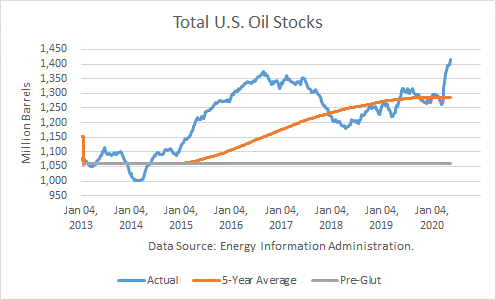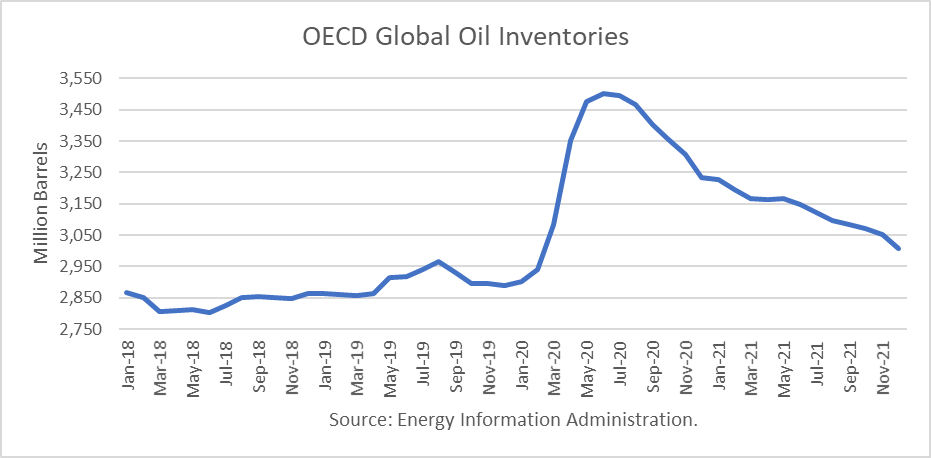The Energy Information Administration released its Short-Term Energy Outlook for June, and it shows that OECD oil inventories likely bottomed June 2018 at 2.802 billion barrels. It estimated stocks built by 94 million barrels in May to end at 3.358 billion, 442 million barrels higher than a year ago.
For 2020, OECD inventories are projected to build by 243 million barrels to 3.133 billion. For 2021 it forecasts that stocks will draw by 273 million barrels to end the year at 2.860 billion.
The EIA forecast was made after the OPEC+ decision to cut production and exports. According to OPEC’s press release: Continue reading "World Oil Supply And Price Outlook, June 2020"





